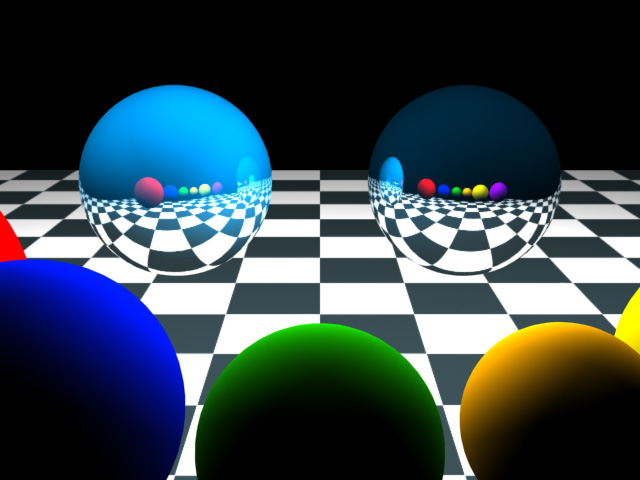
So when someone says a shader uses "Energy Conservation", what do
they mean? The law of conservation of energy states that energy may
neither be created nor destroyed. Therefore the sum of all the energies
in the system is a constant. This is how real materials and lights
work, so if you want your objects to look photorealistic, you need to
have your shaders follow the law of Energy Conservation.
As stated in Siggraph 96 course notes book #30 Pixel Cinematography: A lighting approach for Computer Graphics...
"When light hits an object, the energy is reflected as one of two
components;
the specular component (the shiny highlight) and the diffuse (the color
of the object). The relationship of these two components is what
defines
what kind of material the object is. These two kinds of energy make up
the 100% of light reflected off an object. If 95% of it is diffuse
energy,
then the remaining 5% is specular energy. When the specularity
increases,
the diffuse component drops, and vice versa. A ping pong ball is
considered
to be a very diffuse object, with very little specularity and lots of
diffuse,
and a mirror is thought of as having a very high specularity, and
almost
no diffuse."
NOTE: These days, there's more values to consider, like Transparency
and Translucency, but the base theory is the same, your object can't
reflect more light than it recieves, and so all of the different
material reflection models combined must not be more than 100%. For the
remainder of this tutorial, we
will assume your material has only diffuse and specular components to
keep it simple.
In the real world, light shoots from your light source as energy, hits your object, some of that energy is absorbed into your object (depending on its color) and the rest bounces off the object into your scene.

Lets assume in the diagram above that 100% of the light hitting the
object bounces off (no absorption). So if the energy from your light
source has a value of
1, and the Diffuse Reflection is 0.75, then your Specular Reflectivity
should be set to 0.25. Even if
your object does absorb some of the light (ie, it has a color to it),
whatever amount of light that does bounce off into the eye needs to
retain that diffuse / specular relationship, where the more diffuse,
the less specular, and vice versa.
Many shaders that ship with the major renderers and 3d packages
automatically perform Energy Conservation. If it does, then this
relationship is automatically calculated for you. So if you increase
the amount of reflectivity the shader has, it will automatically reduce
the diffuse amount. Some examples, Vray's 3dsmax VrayMtl uses energy
conservation. Blender's Principled BSDF uses energy conservation.

These two spheres are very, very reflective (specular reflection),
ie, they should
be close to a perfect mirror of their environment. Knowing this, you'd
expect the reflection in the mirror of a black object (the background)
to be black, like it is on the sphere on the right, whereas the sphere
on the left is still blue. So the sphere on the right follows the laws
of energy conservation, and the one on the left does not (it's actually
just adding the reflection on top of the diffuse, instead of dimming
the diffuse to compensate). You can set up a scene like this if you
want to find out if your shader automatically follows the laws of
energy conservation or not.
If your shader does not automatically follow the laws of energy
conservation, then you can achieve the same look by hand. So if you
increase the specular reflectivity of the shader, make sure to reduce
the
brightness of your diffuse by the opposite amount, and the law will be
upheld.